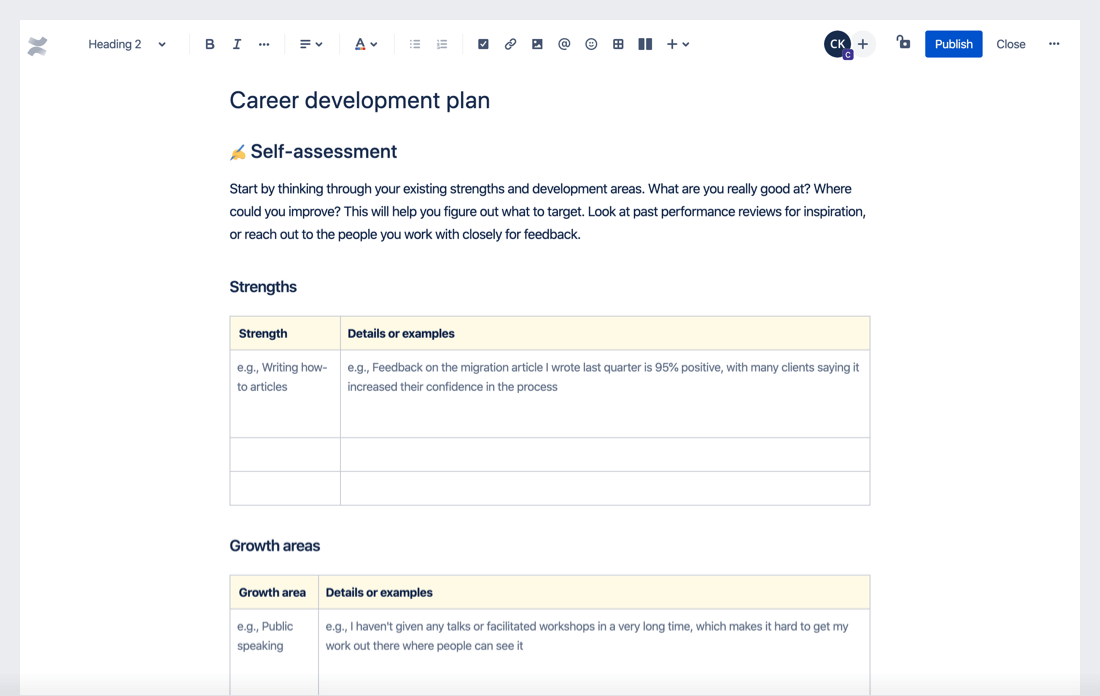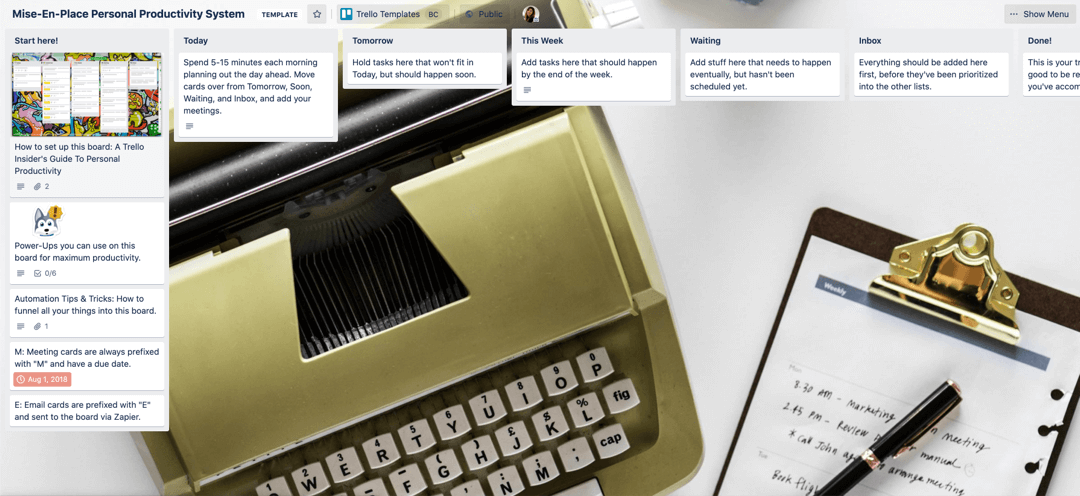Employee development plan
By Kat Boogaard

What do your employees want from you? Do they crave flexibility? Autonomy? Work that aligns with their values?
They want all of the above and one very important thing that's not on that list: growth.
Employees want to know that there isn't a ceiling to their careers - that there's room and resources available for them to develop and advance within your company.
Needless to say, prioritizing employee development positively impacts both recruitment and retention.
In a report 59% of millennial respondents said that opportunities to learn and grow are extremely important to them when applying for a job.
A separate study found that 76% of employees will seek other job opportunities if they’re passed over for a promotion at work.
So what does this all mean for you? Well, put simple, you need to demonstrate that you're committed to the advancement of your people, and one of the best ways to do so is by creating employee development plans.
As part of the HR team, you likely won’t be the one actually creating the plan – that’ll be up to the employee and their supervisor. However, you might need to step in and walk them through the process.
This workflow will vary from organization to organization, but below are generally the steps to kick off and execute an employee development plan.
Step 1
Have the employee complete a self-assessment
To figure out where an employee wants to go, start by evaluating where they are now. Ask the employee to fill out a self-assessment and honestly evaluate their performance.
Not only does this serve as a starting point for a candid conversation between the employee and manager, but it also helps to highlight learning and improvement focus areas.
Step 2
Connect on the employee’s career goals and desires
It’s important to remember that this process isn’t only about what the employee could do – it’s also about what they want to do. With the self-assessment in hand, the employee and manager should engage in a discussion about the employee’s personal ambitions.
Great marketing projects begin and end with Confluence
Example topics to cover:
- Is their goal to move into a management position?
- Do they want to explore a different area of the business or hone a new skill?
- Are they eager to take on some different responsibilities, like representing the company at more speaking functions?
Development means something different to everyone, so encourage the employee and manager to connect on exactly what sort of growth they’re aiming to pursue. That’s context they’ll need as they map out the development plan.
Step 3
Discuss how those relate to company needs
After the employee has laid out their personal objectives, it’s time for the manager to begin to draw lines between their goals and the needs of the business and the team. Remember that not every requested development opportunity will be viable. For example, there might not be any promotions or management positions to be had right now or when the employee has earned one.
That’s why this practice is so critical. It helps the manager determine what’s possible but also beneficial for the business and avoid over-promising to the employee.
To get each employee’s development plan aligned with your org’s goals, establish and track Objectives and Key Results (OKRs) at the company, team, and individual level – and review them often. Jira’s Definitive guide to OKRs can help everyone in your organization understand their shared goals and work toward positive outcomes, together.
Step 4
Explore available development opportunities
Let’s say that the employee is eager to take on more speaking opportunities on behalf of the company, and the organization really could benefit from that increased exposure and thought leadership.

Employee development plans need to go beyond “Yeah, that’s a good idea. Let’s make that happen.” They exist to detail action steps that the employee and manager can take to attain the growth goals.
So now it’s time to ask: What does the employee need to do to accomplish the goal and how can the manager support them? A few options could be:
- Attending employer-provided public speaking courses or trainings
- Collaborating with a mentor who has experience in public speaking
- Applying to be a speaker at industry-relevant conferences and seminars
Step 5
Document the development plan and submit to HR
With all of that sorted out, the manager and employee should document those objectives in a formal employee development plan that should also be submitted to you in the HR department.

While the name might sound formal, keep in mind that the development plan doesn’t need to be anything overly complex. In fact, the more straightforward you can keep it, the easier it will be for all necessary parties to understand and follow that information.

The gist of it is that nobody should be winging these conversations, and equipping both managers and employees with the right resources and guidance means they’re far more likely to approach those important conversations with confidence.
Streamline and templatize the creation of the development plan
You’ll notice that templates have been mentioned several times throughout this guide, and that’s for good reason: They’re a great way to save yourself time and improve consistency, while also making the entire process easier on managers and employees.
There are numerous steps and activities that occur before the actual development plan ever gets documented, and you can templatize each one of those steps. For example, you can create template documents for the following:
- Self-assessment
- One-on-one meeting agenda
- Career goals worksheet
- Employee development plan
Make sure all of these templates are shared, interactive documents, so that managers and employees can easily collaborate through edits, comments, task assignments, and more.
Actively promote other development opportunities
For some growth and development means climbing the ladder, but there are other ways to reach the next level.
That’s why one of the most crucial responsibilities of the HR team in supporting employee growth is to actively promote all development opportunities that are available, whether it’s something as formal as a lengthy training program or as casual as a regularly scheduled lunch and learn.
Exactly where and how you promote these is up to you and largely depends on what tools and platforms you have available. But at the very least, you can:
- Send out all-team emails and calendar invites for upcoming events, trainings, and opportunities
- Post these training opportunities to your employee intranet
- Remind managers to promote these opportunities in team meetings and conversations
- Include signs, flyers, and other promotional materials around the office
Make it your goal to spread the word about what’s available, and you’ll likely see an increasing number of employees taking advantage.

Share Trello’s Personal Productivity System board with employees to help them plan and track their to-dos and projects
